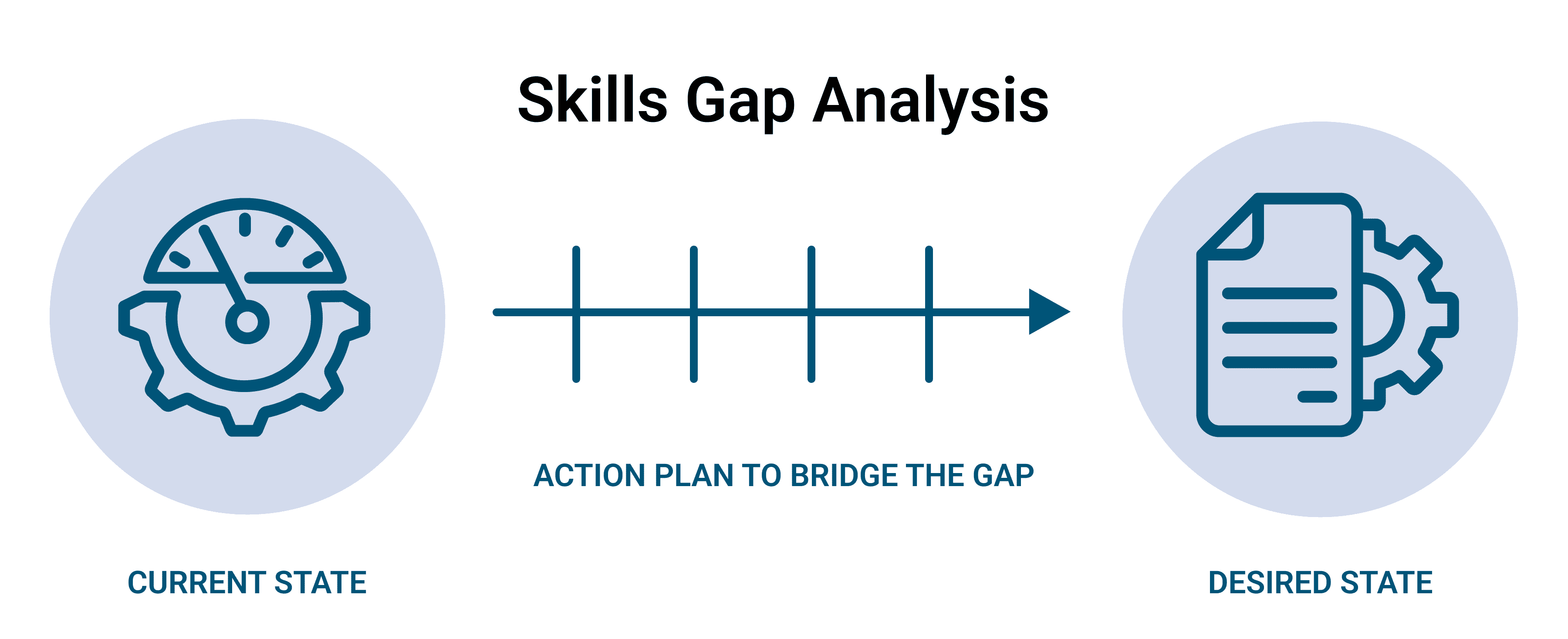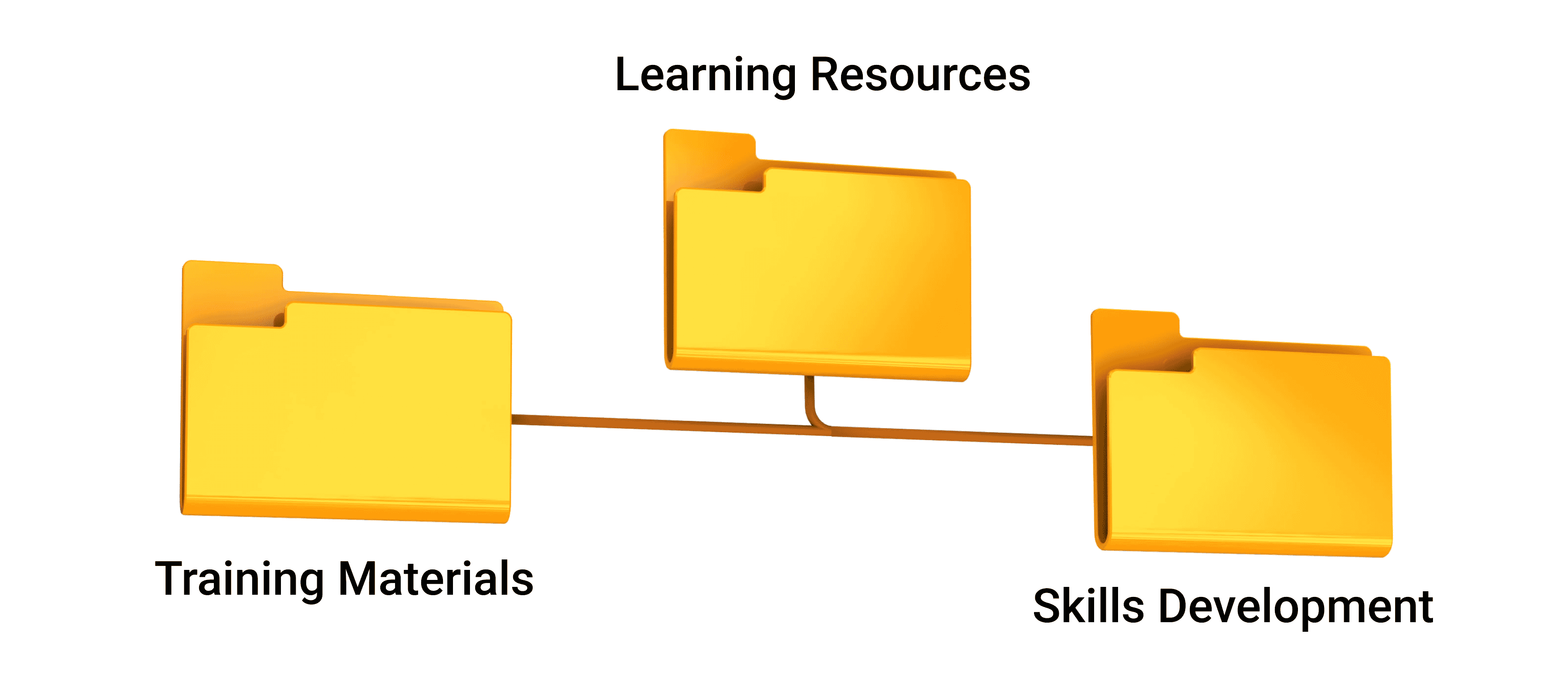The pace of change in today’s workplace has never been faster. As new technologies emerge and industries transform, employees face growing pressure to adapt. Yet, organizations often look outward—hiring externally to fill skill needs and gaps —when the greatest potential for growth lies within their existing workforce.
Nurturing internal talent through targeted training and development is not only cost-effective but also fosters loyalty and innovation. A critical component of successful internal training is designing a learning journey that addresses skill gaps and supports employees throughout their growth. For organizations looking to develop such initiatives, understanding the steps involved in creating a learning journey that improves employee performance is key.
According to LinkedIn's 2024 Workplace Learning Report, organizations with strong learning cultures achieve significantly higher retention rates of 57% compared to those with baseline learning cultures, while also seeing internal mobility rates increase to 23%. The challenge, however, is identifying the specific skills employees lack and delivering effective, scalable training solutions to address those gaps.
This blog explores how organizations can approach closing skill gaps strategically. From conducting an analysis to designing an impactful training program and leveraging learning content management systems (LCMS), you’ll discover actionable insights to empower your workforce and future-proof your organization.

Identifying Skills Gaps in Your Organization
Closing skills gaps begins with understanding where they exist. A structured approach to identifying these gaps ensures that employee training initiatives are both targeted and impactful.
Conducting Skills Assessments
What skills are necessary to achieve your business goals? And which of those are lacking within your team? Conducting an analysis can help you uncover these answers. This means looking at the present skill set across your workforce and comparing it against what will be needed in the future.
Start with a structured assessment, whether it’s through employee surveys, one-on-one interviews, or performance reviews. Understanding the specific skill sets required for each role will give you a clearer picture of where the gaps lie. For example, if your company is implementing new software, your team may require an additional training session in software proficiency and data management.
Analyzing Workforce Data
Once you have feedback from employees, it's time to dive deeper into workforce data. Use data analytics tools to gather insights into current employee performance and learning trends. These metrics will help you further refine your gap analysis and pinpoint specific areas that need attention.
By identifying trends, such as employees who consistently struggle with certain tasks or are unable to meet performance goals, you can create more targeted training programs. This data-driven approach is key to making informed decisions about the content and scope of your training material.
Developing Comprehensive Training Manuals
Once the skills gaps are identified, the next step is creating corporate training materials that resonate with employees and are designed to help them succeed.
Utilizing Technical Writing Techniques
Training manual software is more than just instructions—they are the foundation of your employee's learning journey. Well-crafted manuals should be clear, concise, and easy to follow, with step-by-step instructions that guide employees through new processes or technologies. Writing with a technical perspective ensures these manuals are precise, and every learner, regardless of their experience level, can easily absorb the material.
Good technical writing also anticipates common roadblocks or areas of confusion and addresses them proactively, reducing the need for additional clarifications down the line.
Creating Effective Learning Resources
Resources should extend beyond the basics. Interactive content like videos, simulations, and quizzes can significantly improve the learning experience. By including a mix of learning formats and training goals, you ensure that the resources cater to different learning styles and keep employees engaged.
The aim here is not only to create content that is educational but also content that sparks curiosity and invites learners to explore more deeply. This multi-faceted approach creates a more dynamic learning environment, ensuring everyone stays invested in their employee development.

Organizing Training Content with a Learning Content Management System (LCMS)
As your training materials grow, managing them effectively becomes a challenge. This is where learning & development management tools, such as MadCap Xyleme LCMS, comes in. Unlike traditional content management systems (CMS), an LCMS is designed to organize, store, and deliver learning content efficiently across your organization.
Benefits of an LCMS
An LCMS offers several advantages over a traditional CMS. For one, it centralizes your training materials, making it easier to update, organize, and distribute content consistently. With an LCMS, employees always have access to the most current resources, ensuring they’re learning from relevant materials.
Moreover, an LCMS integrates with your training processes, making it easy to track employee progress and performance. This gives you real-time insights into how well employees are absorbing the content and applying it to their work.
Streamlining Training Delivery
Using an LCMS like Xyleme allows your organization to streamline training delivery across all platforms and devices. Whether employees are in the office, working remotely, or on the go, they can access training content anytime, anywhere. Additionally, content authoring software and a content delivery platform ensure the content is not only created efficiently but also delivered seamlessly to the right audience.
Content collaboration software further enhances this process by enabling employees to work together, share feedback, and update materials in real-time, ensuring that learning content stays relevant and up-to-date. This ensures that learning isn’t confined to specific locations or times, making it easier for employees to integrate training into their daily routines, allowing them to grow the necessary skills for professional development on the go.
Customizing Training Materials
One-size-fits-all training isn’t enough. To truly bridge skills gaps, the learning experience needs to be tailored to individual roles and learning styles.
Implementing Single-Sourcing Techniques
Single-source authoring is a method that enables you to create training content once and then adapt it for different audiences or delivery methods. Think: a training module designed for your IT team that can be reused for customer support staff, with minor adjustments to fit their specific needs.
This is where Xyleme comes in. By leveraging the platform’s single-sourcing capabilities, you can create reusable content blocks that are easily customized for different teams, roles, or learner levels. With its modular approach, you can ensure that each employee gets the most relevant content for their specific job requirements, without having to recreate materials from scratch.
Tailoring Content for Individual Needs
Incorporating adaptive learning into your training programs takes customization a step further and allows your employees to feel challenged without being overwhelmed. Using Xyleme, you can design modular and reusable content tailored to individual learning paths. Content tagging and metadata features enable the system to deliver personalized training materials based on each learner’s progress.

Measuring Training Effectiveness
Now that you have a good content strategy in place, tracking key metrics will help you understand how well your employees are absorbing and applying new skills.
Key Metrics for Success
Several key performance indicators (KPIs) can help you gauge the effectiveness of your training initiatives:
- Time-to-proficiency: How quickly can employees demonstrate the skills they’ve learned? A decrease in time-to-proficiency indicates that employees are learning faster and applying new skills more effectively.
- Knowledge retention: Measure how much of the training content employees can recall after a period of time. This can be tested through follow-up quizzes or performance reviews.
- Employee performance: Track improvements in job performance, such as increased productivity, fewer errors, or higher customer satisfaction.
- Employee engagement: Monitor how engaged employees are during the training process. High engagement typically correlates with better learning outcomes and retention.
Continuous Improvement Strategies
These metrics should be continuously monitored to refine your training programs. Recent PwC research reveals a compelling reality: nearly half of today's workforce considers learning opportunities a decisive factor in their employment decisions, with potential job-switchers being nearly twice as likely to prioritize skill-building opportunities. This underscores why measuring and improving training effectiveness isn't just about skill development—it's crucial for retention and organizational stability.
To refine your training initiatives:
- Implement real-time feedback loops: Gather employee input through quick post-training surveys or focus groups. Ask participants to rate the relevance of the content or suggest areas for improvement.
- Run pilot programs: Before rolling out new training materials organization-wide, test them with a small group. Monitor engagement levels and performance outcomes to identify any necessary adjustments.
- Leverage learning analytics: Use tools like Xyleme’s analytics capabilities to track participation rates, content effectiveness, and learner progress. Identify patterns, such as which modules have higher drop-off rates, and make targeted revisions.
- Incorporate incremental updates: Regularly update training materials to reflect evolving business needs. Set a quarterly review schedule to ensure content stays relevant and aligned with organizational goals.
- Celebrate milestones: Recognize employees' achievements through certifications, digital badges, or team acknowledgments. This not only motivates learners but also reinforces the importance of skill-building within your company culture.
Real-World Success: How PwC Singapore Transformed Their Workforce
To see these principles in action, let's examine how PwC Singapore successfully tackled the challenge of upskilling their workforce in preparation for digital transformation. Facing the growing mismatch between current capabilities and future needs, PwC recognized that their 3,500-strong workforce needed more than just technical training—they needed a comprehensive approach to digital literacy that would leave no employee behind.
The organization invested S$10 million in a two-year upskilling program centered on their Digital Academy, which offered tailored training pathways for different skill levels and roles. Beyond mandatory training modules, they provided specialized programs in critical areas like business analytics, robotic process automation, and artificial intelligence. To ensure sustained engagement and recognition, they implemented a digital badge system that acknowledged employees' growing capabilities while tracking progress through concrete metrics.
The results spoke volumes about the program's effectiveness. To date, nearly 3,400 employees have completed their Digital Academy training, leading to the development of 31 automation frameworks and tools that saved over 47,000 hours across various functions. More importantly, when the COVID-19 pandemic struck, PwC Singapore's investment in digital capabilities enabled them to adapt swiftly to virtual working environments without disrupting client service. As Ho Hean Chan, the partner leading their digital upskilling initiative, observed, "Everyone should be able to live, learn, work, and participate in the digital future—this is the vision that powers our digital upskilling journey."
Closing Skill Gaps: Fostering Continuous Learning and Future-Proofing Your Workforce
Bridging skills gaps within your organization is more than just filling vacant roles—it’s about fostering a culture of continuous learning and growth. By strategically identifying skills gaps, creating tailored training programs, and leveraging an LCMS like Xyleme, organizations can empower their workforce to take on new challenges with confidence.
With the right tools and a proactive approach, businesses can close the gap, drive innovation, and future-proof their teams. Investing in internal talent not only enhances your workforce’s abilities but also strengthens organizational loyalty and performance, ensuring long-term success.
Curious how Xyleme can help transform your training strategy with tools that align workforce skills with your organization's goals? Schedule a consultation today.







